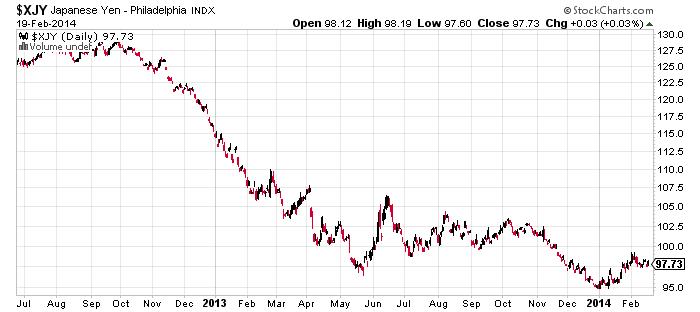Whenever I got stuck solving a problem in elementary school, my teacher would say, “go back and see where you went wrong.” This lesson—“learn from your mistakes”—was taught again in high school, and then throughout my life. It’s very simple: you can’t do the same thing over and over again and expect different results. Albert Einstein called it “insanity.”
When I look at the Japanese economy, I see the most basic lesson you learn in business school being ignored. The Bank of Japan, and the government, in an effort to improve the Japanese economy has resorted to money printing (quantitative easing) over and over, failing each time to spur growth. One might call it an act of insanity.
Through quantitative easing, the central bank of Japan wanted to boost the Japanese economy. It hoped that pushing more exports to the global economy from its manufacturers would change the fate of the country. It wanted inflation as well.
The result: after years of quantitative easing, the government and the central bank have outright failed to revive the Japanese economy. In fact, the opposite of their original plan is happening.
In January, the trade deficit in the Japanese economy grew—the country’s imports were more than its exports. Imports amounted to 7.70 trillion yen and exports were only 5.88 trillion yen. The trade deficit was 3.5% greater compared to the previous month. (Source: Japanese Customers web site, last accessed February 20, 2014.) Mind you, January wasn’t the only month when imports were more than exports in the Japanese economy. This is something that has been happening for some time.
But there has been one immense side effect of quantitative easing: the Japanese currency (the yen) continues to tumble. You can see in the chart below how much the currency has come down since mid-2012.
 This phenomenon—of the Bank of Japan failing with quantitative easing, the Japanese economy lagging, and the yen falling in value—has been talked about in these pages many times. Sadly, the Federal Reserve keeps its printing presses running. Remember: “tapering” doesn’t mean the printing has stopped; it just means it’s slowing down.
This phenomenon—of the Bank of Japan failing with quantitative easing, the Japanese economy lagging, and the yen falling in value—has been talked about in these pages many times. Sadly, the Federal Reserve keeps its printing presses running. Remember: “tapering” doesn’t mean the printing has stopped; it just means it’s slowing down.
While I acknowledge the U.S. dollar has been stronger since the Fed said it would pull back on quantitative easing, all the money printing has done is threaten the U.S. dollar. The greenback is currently considered a “safe currency,” as the euro remains under pressure and the yen suffers. But the rise in gold bullion prices so far this year is singing a different song—a tune about a lower-valued greenback ahead.
Inflation in the Japanese economy isn’t increasing as hoped by implementing quantitative easing. In the last quarter of 2013, the consumer price index (CPI) in Japan increased by only 0.5% from the previous quarter. The CPI increased 1.5% for the entire year. The Japanese government’s plan to achieve an inflation rate of two percent per year isn’t happening. (Source: Statistics Japan web site, last accessed February 20, 2014.)
Has the Japanese economy improved at all? Between 2012 and 2013, Japan’s gross domestic product (GDP) increased by just 0.2%, from 1.4% in 2012 to 1.6% in 2013. (Source: Japan’s Cabinet Office, February 17, 2014.)
Disclaimer: Dear Reader: There is no magic formula to getting rich. Success in investment vehicles with the best prospects for price appreciation can only be achieved through proper and rigorous research and analysis. The opinions in this e-newsletter are just that, opinions of the authors. Information contained herein, while believed to be correct, is not guaranteed as accurate. Warning: Investing often involves high risks and you can lose a lot of money. Please do not invest with money you cannot afford to lose.